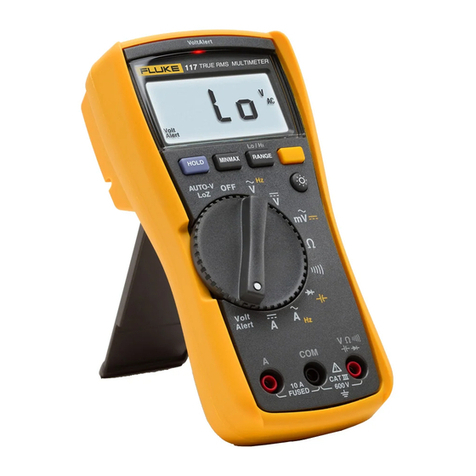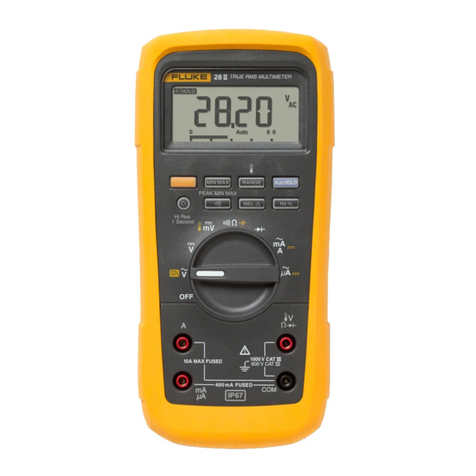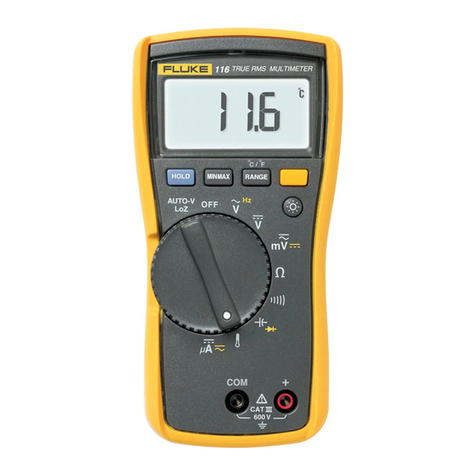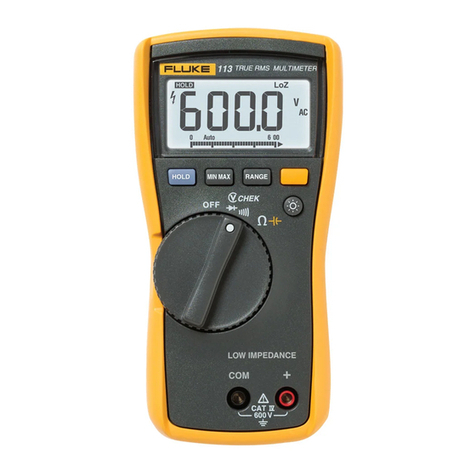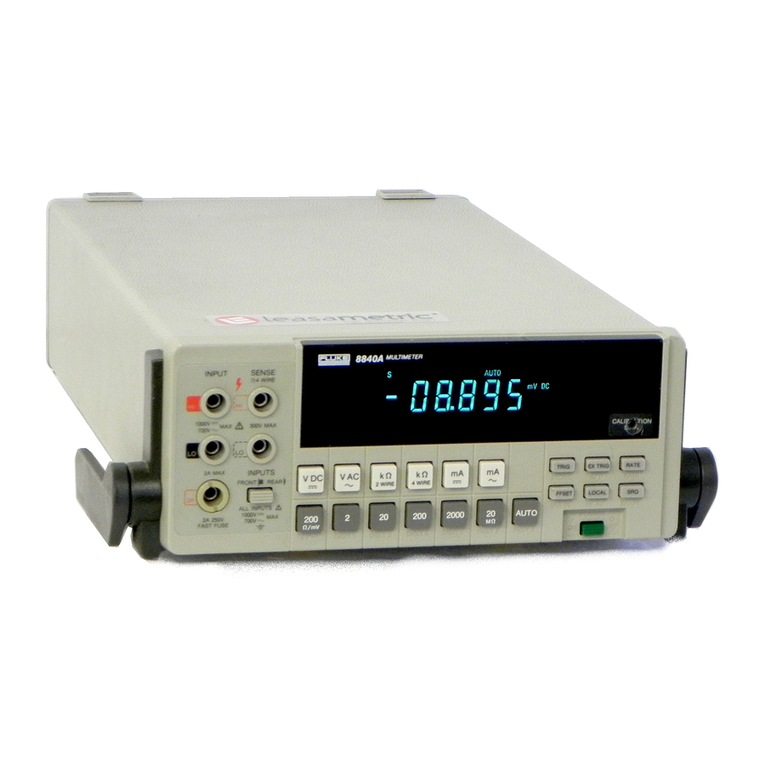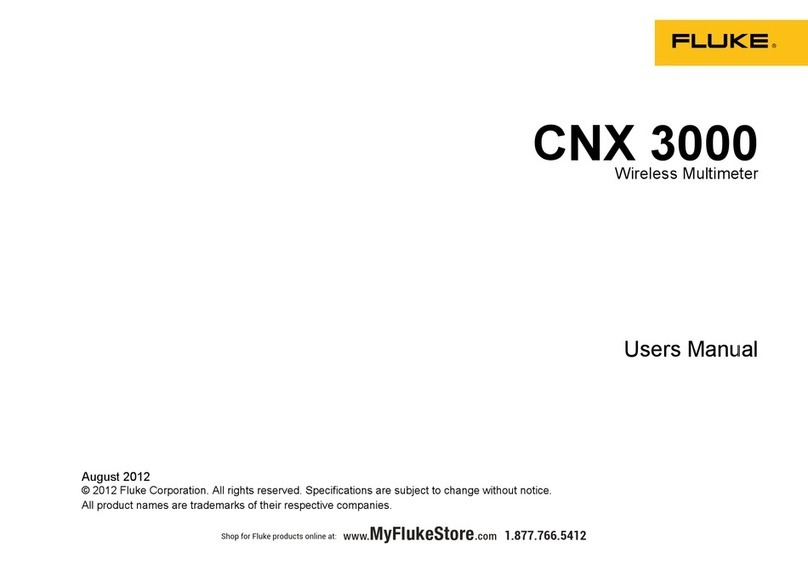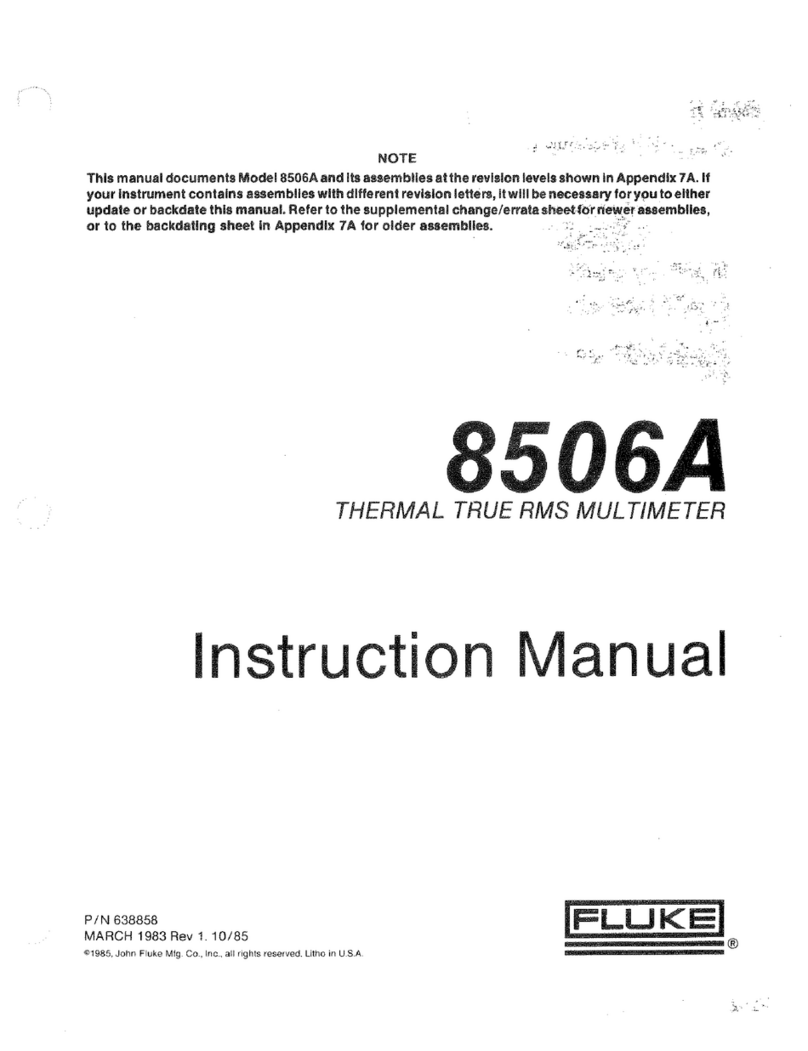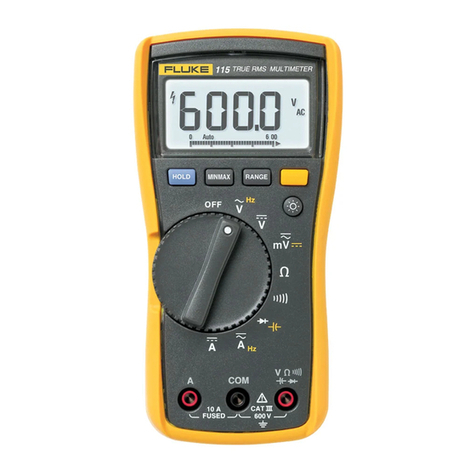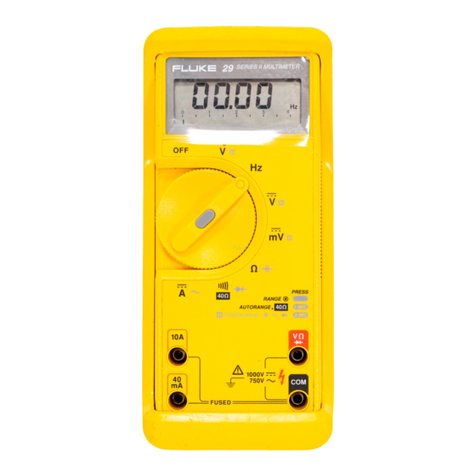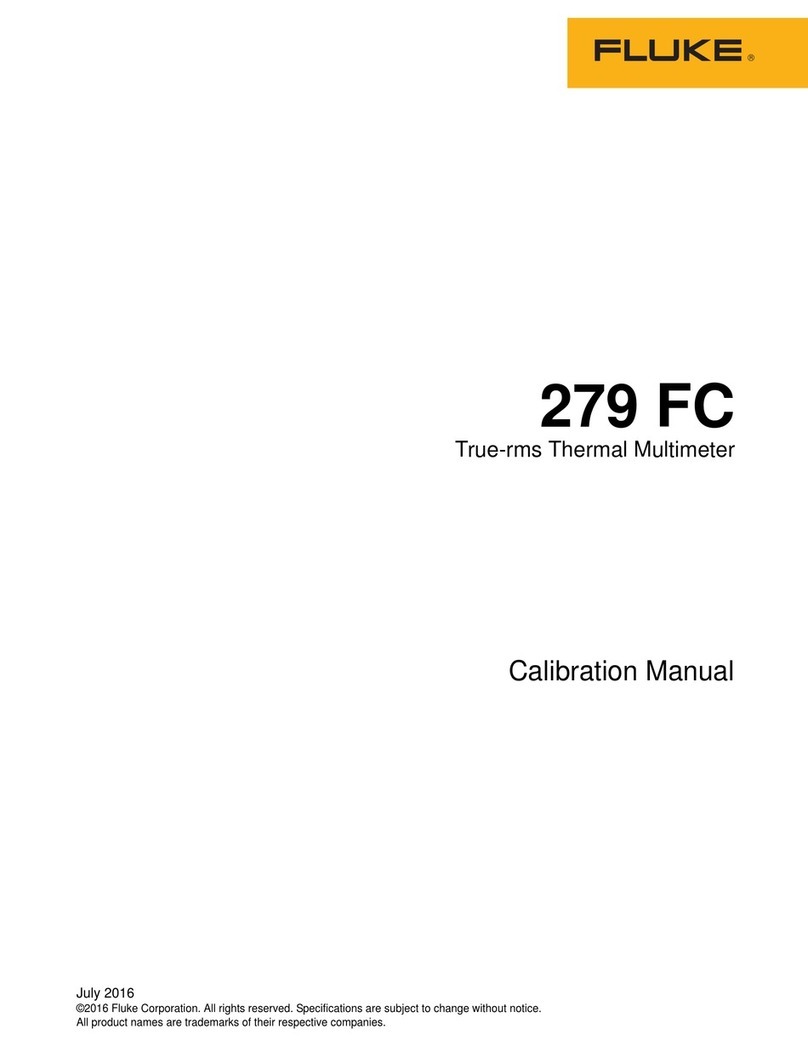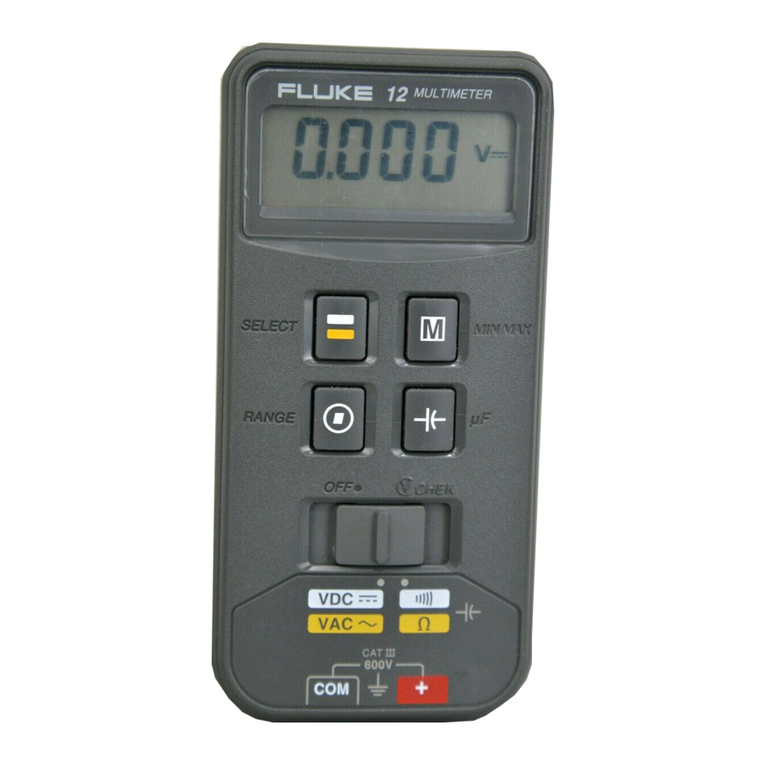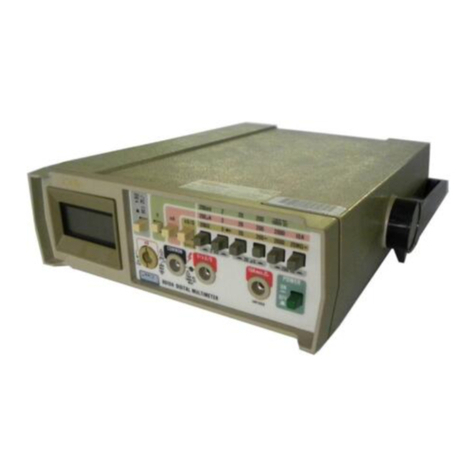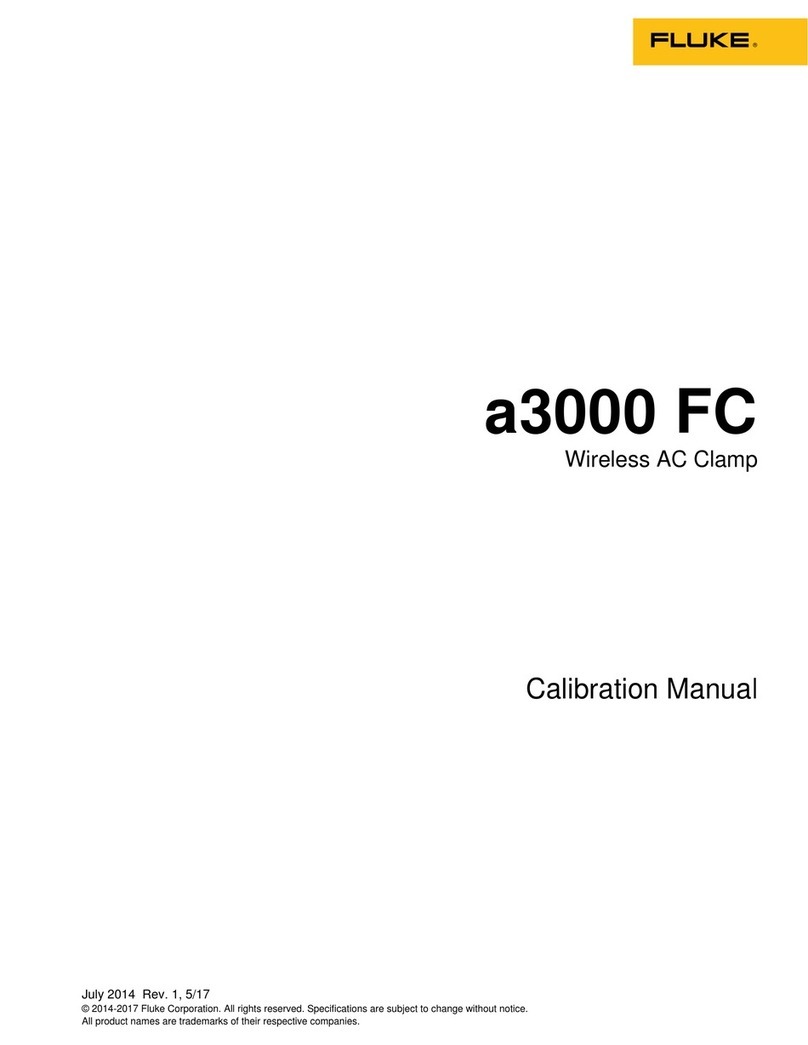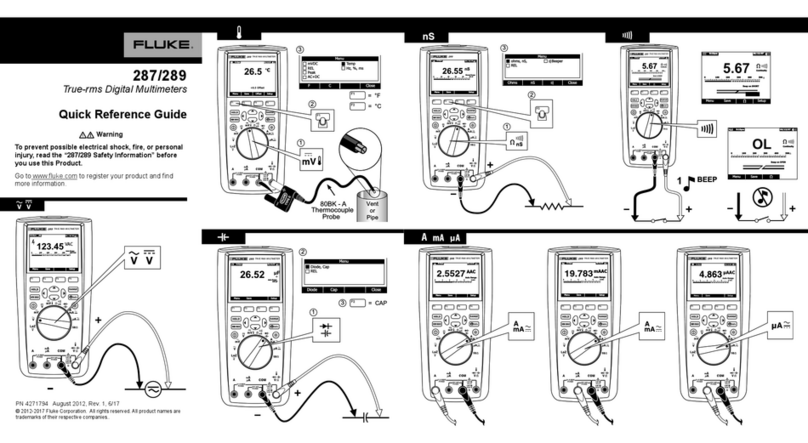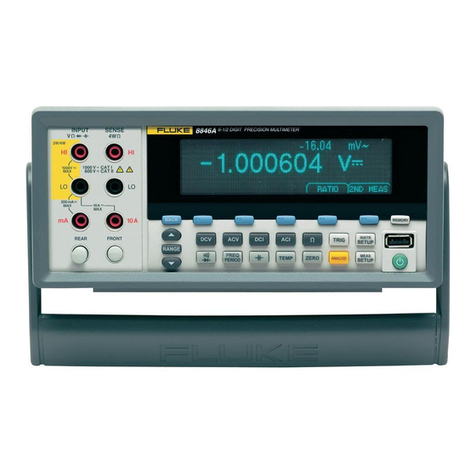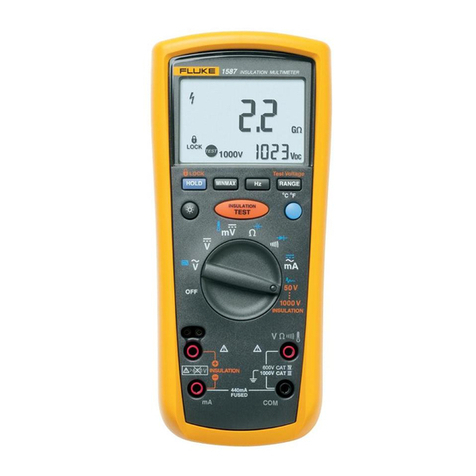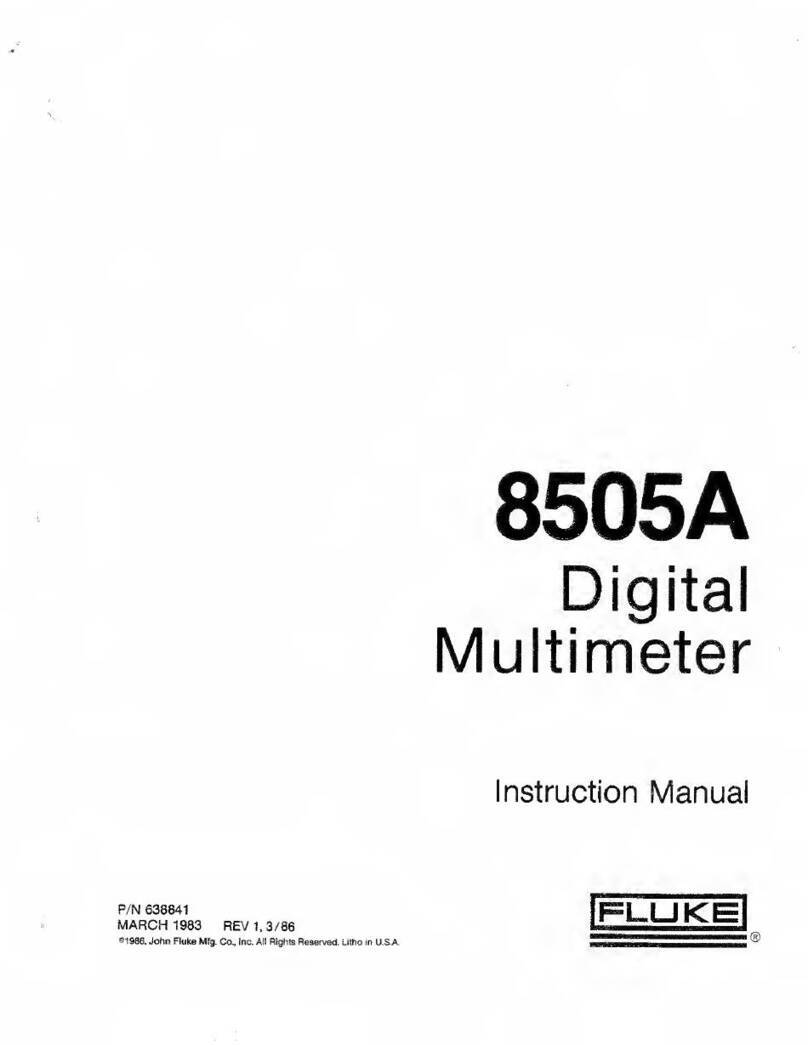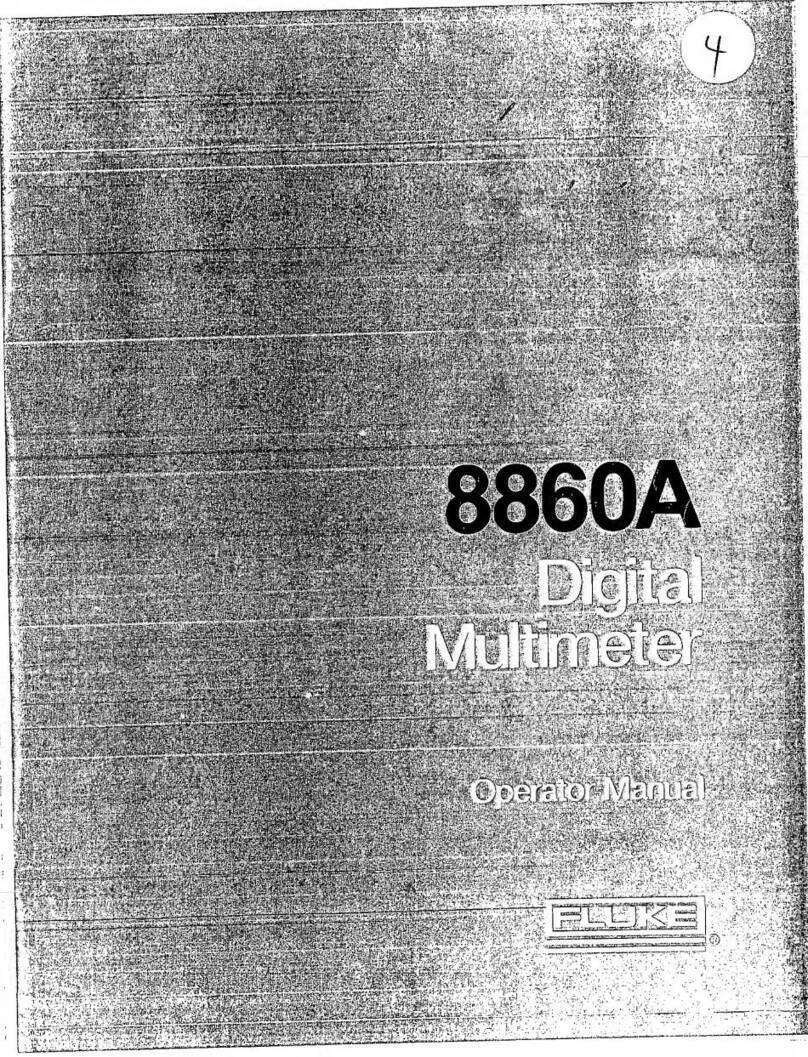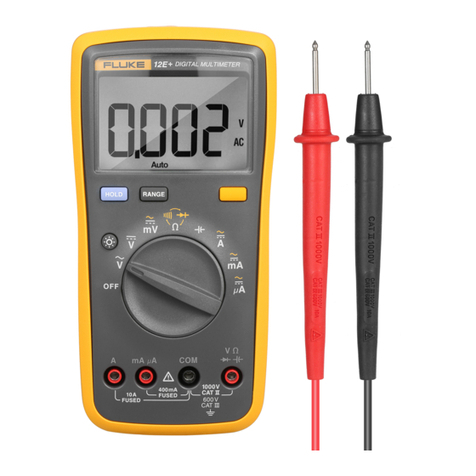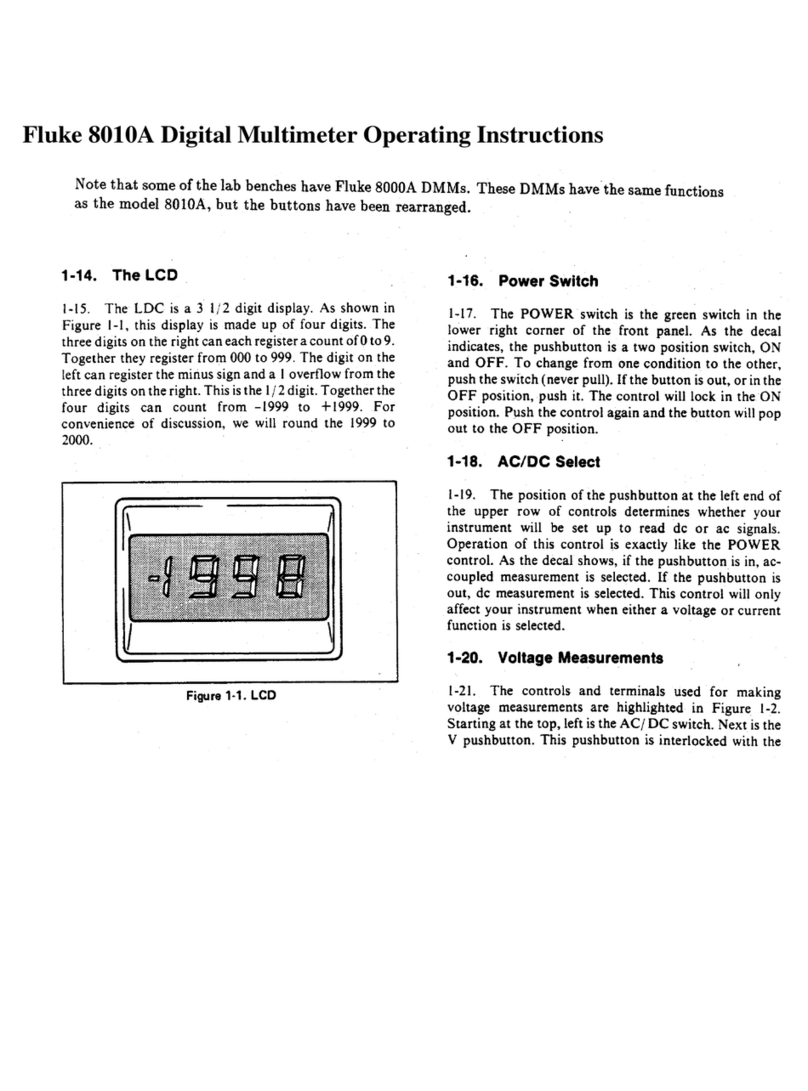
287/289
Getting Started
2
•Remove test leads from the Meter before opening the
battery door.
•Inspect the test leads for damaged insulation or
exposed metal. Check the test leads for continuity.
Replace damaged test leads before you use the Meter.
•Do not apply more than the rated voltage, as marked
on the Meter, between the terminals or between any
terminal and earth ground.
•Never operate the Meter with the cover removed or the
case open.
•Use caution when working with voltages above 30 V ac
rms, 42 V ac peak, or 60 V dc. These voltages pose a
shock hazard.
•Use only the replacement fuses specified by the
manual.
•Use the proper terminals, function, and range for
measurements.
•Avoid working alone.
•When measuring current, turn off circuit power before
connecting the Meter in the circuit. Remember to
place the Meter in series with the circuit.
•When making electrical connections, connect the
common test lead before connecting the live test lead;
when disconnecting, disconnect the live test lead
before disconnecting the common test lead.
•Do not use the Meter if it operates abnormally.
Protection may be impaired. When in doubt, have the
Meter serviced.
•Do not operate the Meter around explosive gas, vapor,
or dust.
•Use only 1.5 V AA batteries, properly installed in the
Meter case, to power the Meter.
•When servicing the Meter, use only specified
replacement parts.
•When using probes, keep fingers behind the finger
guards on the probes.
•Do not use the Low Pass Filter option to verify the
presence of hazardous voltages. Voltages greater than
what is indicated may be present. First, make a
voltage measurement without the filter to detect the
possible presence of hazardous voltage. Then select
the filter function.
•Only use test leads that have the same voltage,
category, and amperage ratings as the meter and that
have been approved by a safety agency.
•Use proper protective equipment, as required by local
or national authorities when working in hazardous
areas.
•Comply with local and national safety requirements
when working in hazardous locations.
